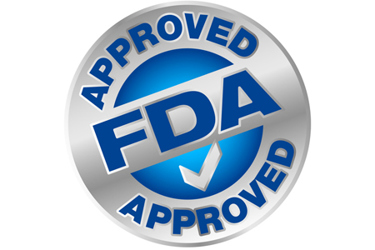BioPharma Industry Loves New FDA PreCheck Program

By Louis Garguilo, Chief Editor, Outsourced Pharma

Dhaval Rathod of the Pharmaceutical Sciences group at Shionogi Inc. (USA) alerted me to widespread industry support for the FDA’s newly proposed PreCheck program, officially introduced for comment at a public meeting in September.
Separately, Bikash Chatterjee, President / Chief Scientific Officer, Pharmatech, Inc. (a USP company), also mentioned I should consider writing about the program for readers.
So here we go.

Right on time, says Rathod: “The pharmaceutical industry stands at a critical juncture in addressing supply-chain vulnerabilities that have become increasingly apparent in recent years.”
Proof comes in many forms. The FDA reports over 50% of pharmaceuticals distributed in the U.S. are manufactured overseas; only 11% of active pharmaceutical ingredient (API) manufacturers operate domestically.

He cites recent data from an Office of Pharmaceutical Quality report that states while U.S. manufacturing sites have grown by 7% the past five years, facilities in India and China have expanded by three to four times that pace.
Will trajectories change with activities of this second Trump administration? If so, it’ll also require fundamental, individual company and overall industry attitudes, and behavioral objectives.
“Initiatives like QMM [Quality Management Maturity] and PreCheck can raise the floor on supply resilience,” comments Chatterjee, “but only if we anchor them in the core tenets of a mature PQS [Pharmaceutical Quality System]: leadership accountability, knowledge management, risk-based thinking, and measurable continuous improvement.”
The Two-Phase PreCheck Framework
FDA PreCheck was developed in response to President Trump’s Executive Order 14293 (Regulatory Relief to Promote Domestic Production of Critical Medicines), which directs the agency to “streamline review of domestic pharmaceutical manufacturing, and eliminate unnecessary regulatory requirements, while maximizing review timeliness and predictability.”
This will be accomplished via “an innovative two-phase approach to facilitate new U.S. drug manufacturing facilities.”
“It fundamentally reimagines how manufacturers interact with FDA during facility development and application submission," says Rathod, "and represents a paradigm shift from traditional reactive regulatory oversight.”
Let's look at the two phases.
The Facility Readiness Phase provides manufacturers with more frequent FDA communication at critical development stages, including facility design, construction, and pre-production.
This encourages companies to provide comprehensive facility-specific information through a Type V Drug Master File, including site operations layout and description, PQS elements, and QMM practices. This DMF can be referenced in a drug application.
The Facility Readiness Phase enables manufacturers to engage FDA during the critical design and construction stages – well before facilities become operational.
This early engagement model, which industry experts at that September meeting compared favorably to the Emerging Technology Program, allows for iterative refinement of facility design, equipment selection, and quality system implementation based on regulatory feedback, potentially avoiding costly retrofitting or redesign efforts later in development.
The decoupling of facility readiness from product-specific applications emerged as one of the most valued aspects of the program during stakeholder discussions.
Now CMOs can pre-qualify facilities through early FDA engagement, and demonstrate validated readiness to potential clients.
Second is the Application Submission Phase, centered on streamlining development of the Chemistry, Manufacturing, and Controls (CMC) section of the application “through pre-application meetings and early feedback.”
By providing advanced awareness of facility and manufacturing strategies for specific drugs, manufacturers can enable earlier assessment and inspection activities within the review cycle, potentially reducing overall time to market for critical medicines manufactured in new domestic facilities.
With these two phases we should get more communication between manufacturers and the FDA, resulting in more efficient facility design and construction.
Critical Manufacturing and Quality Considerations
A cornerstone of the PreCheck program involves use of the aforementioned Type V Drug Master Files (DMFs) to communicate facility-specific information.
These DMFs serve as living documents that manufacturers can update throughout the facility lifecycle, providing FDA with comprehensive insights into site operations layout, Pharmaceutical Quality System elements, and Quality Management Maturity practices.
Rathod says that for manufacturers, the Type V DMF represents both an opportunity and a challenge.
The opportunity lies in creating a centralized repository of facility information that can be referenced across multiple product applications, reducing redundancy and ensuring consistency in facility-related submissions.
The challenge involves determining the appropriate level of detail and ensuring that facility-specific information remains current and accurate as operations evolve.
Chatterjee interjects here that Type V DMFs currently have no standard format. Unless FDA provides adequate guidance in terms of structure and content, drug sponsors will not know what should be included in the DMF.
For certain, manufacturers participating in PreCheck should prepare to demonstrate more than the existence of quality systems, but their tight integration, overall effectiveness, and mechanisms for continuous improvement.
This includes demonstrating robust change management processes, comprehensive risk assessment methodologies, and data-driven decision-making frameworks.
In other words, demonstrate how quality systems will evolve and mature as the facility moves from design through construction to operational status.
Special consideration should be given to biological product manufacturing, thinks Rathod.
“Regulatory nuances exist regarding the use of DMFs for biologics license applications (BLAs). Manufacturers of biological products must carefully navigate how they can leverage Type V DMF information within the BLA framework, particularly given FDA's historical position on DMF usage for biologics.
Add PreCheck To QMM, Etc.
Chatterjee says no initiative can be impactful “if not fit into the full architecture of drug development and manufacturing outsourcing.”
“For outsourced models, the sponsor’s responsibility isn’t just to ensure GMP for my product. It’s to explicitly define the collaboration needed so practices beyond the immediate product – those that reveal true QMS health – are made transparent by the CDMO.”
These include:
- management review outcomes
- change-control discipline
- deviation/CAPA effectiveness
- data-integrity governance
- supplier oversight
- and trend metrics
Chatterjee believes the FDA’s guidance is clear: roles and responsibilities must be delineated, but the product owner ultimately owns quality and must secure visibility into how the system performs.
“ICH Q10 backs this with expectations for management review, change management, and continual improvement across the lifecycle,” he adds.
Both Rathod and Chatterjee agree transformation takes time, requires cross-functional ownership, and operations that link quality outcomes to business continuity.
Furthermore, if we use these programs to hard-wire transparency and accountability across sponsor-CDMO partnerships, manufacturers and ultimately patients will win.
-------
In part two, Dhaval Rathod of the Pharmaceutical Sciences group at Shionogi Inc. (USA) will continue our review by offering strategic implementation recommendations for the FDA PreCheck program.
